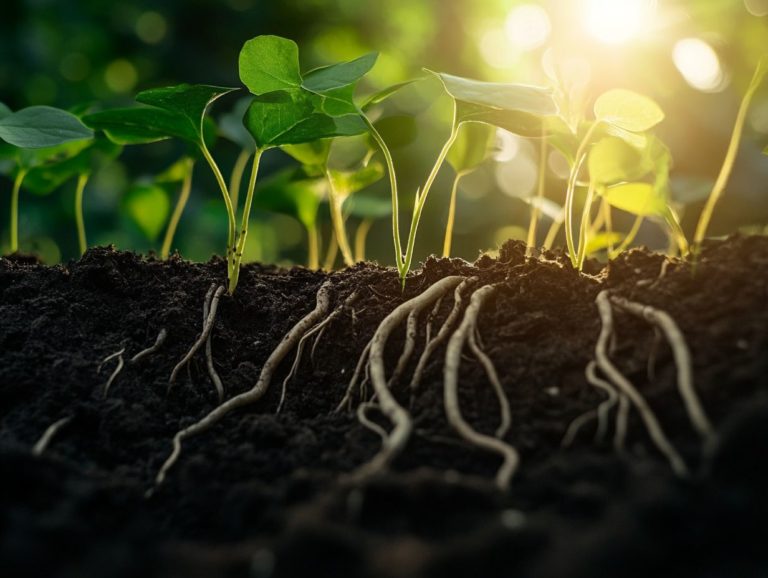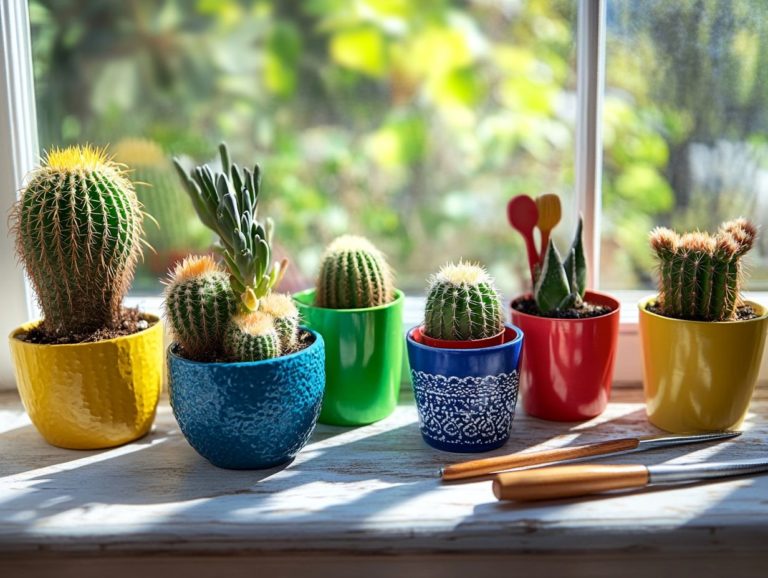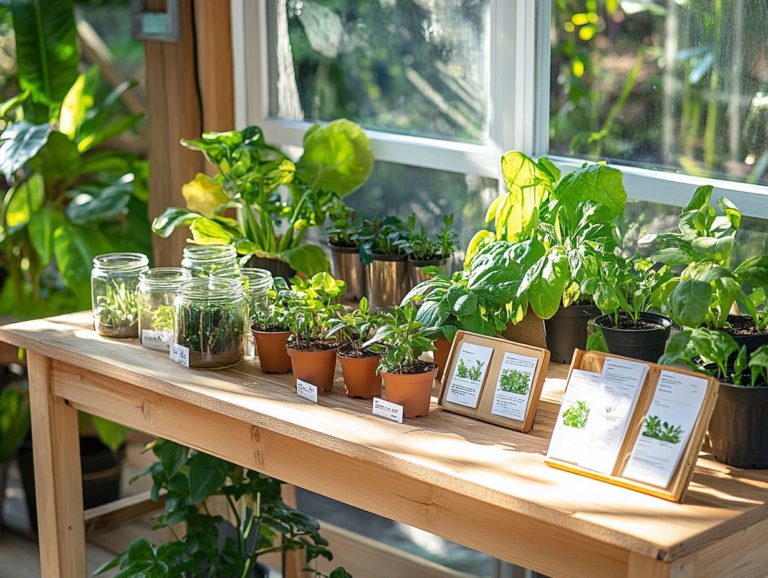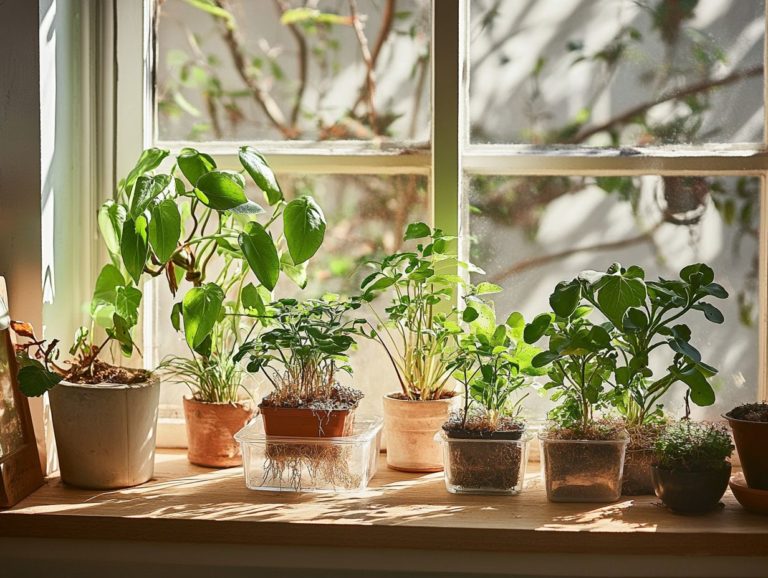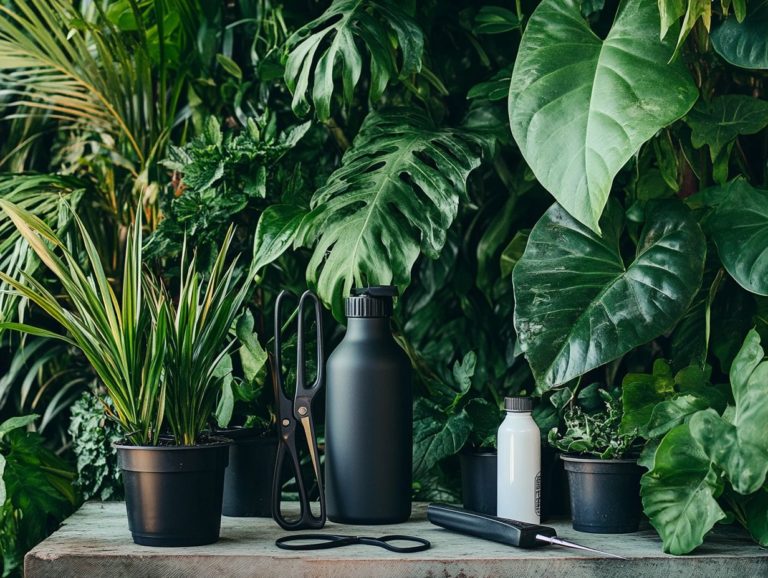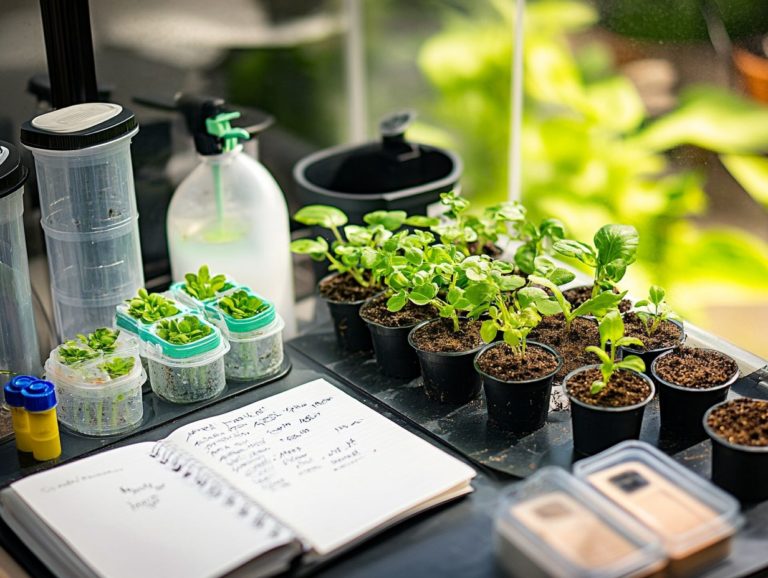How to Propagate Coleus Plants
Coleus plants are cherished for their vibrant foliage and low maintenance. They earn a special place in every gardener’s heart. If you’re eager to enhance your collection or share these breathtaking plants with friends, grasping the art of plant propagation is essential.
Now is the perfect time to cultivate your green thumb! Let s dive into exciting methods for propagating coleus plants. You ll discover the supplies you need for successful propagation, along with a step-by-step guide to make the process seamless.
This piece addresses common issues and offers invaluable gardening advice for nurturing your newly propagated plants while avoiding pests.
Contents
- Key Takeaways:
- Methods of Propagating Coleus Plants
- Preparing for Propagation
- Step-by-Step Guide to Propagating Coleus Plants and Other Houseplants
- Troubleshooting Common Issues
- Caring for Newly Propagated Coleus Plants
- Frequently Asked Questions
- Can I propagate coleus plants from cuttings?
- When is the best time to propagate coleus plants?
- What is the best method for propagating coleus plants?
- How long does it take for coleus cuttings to root?
- Do coleus plants need any special care during the propagation process?
- Can I use any type of water to propagate coleus plants?
Key Takeaways:
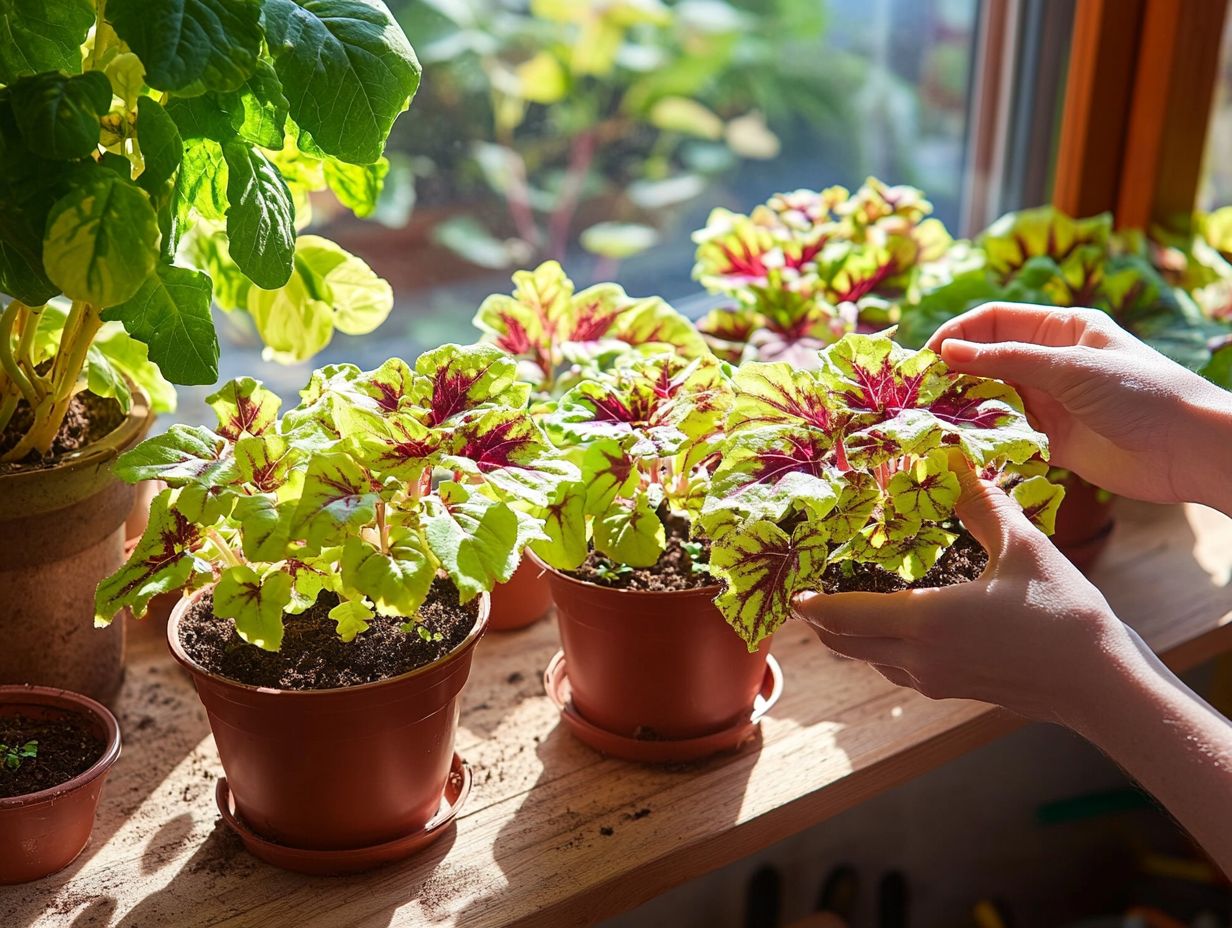
- Propagating coleus plants is an easy and cost-effective way to expand your garden.
- The two main methods of propagation are using cuttings and starting from seeds, each offering unique gardening tips for success.
- To successfully propagate coleus plants, gather the necessary supplies, follow step-by-step instructions, and troubleshoot any issues that may arise.
What is Plant Propagation?
Plant propagation is your gateway to creating new plants from existing ones, utilizing methods like cuttings, seedlings, and seed germination. This important skill is embraced by gardening enthusiasts and experts alike, enabling you to grow beautiful leaves and effortlessly expand your garden.
Effective propagation not only secures the survival of your favorite plant varieties but also enriches your garden design by introducing a delightful array of species. By understanding the various techniques for plant propagation, including how to propagate peperomia plants, you can significantly enhance your gardening experience and develop a deeper appreciation for coleus and other plants.
For example, taking cuttings from healthy plants is a straightforward method that encourages rapid root development. On the other hand, starting from seedlings requires a nurturing approach but rewards you with the joy of watching something grow from the very beginning. Seed germination presents an exciting challenge, enabling you to cultivate rare species that add a touch of uniqueness to your garden.
Proper care is crucial for the success of these growing plants through attentive watering, light management, and nutrient support for their successful establishment and growth.
Methods of Propagating Coleus Plants
In terms of propagating coleus plants, you have an array of effective methods at your disposal to guarantee successful growth and vibrant foliage. Whether you opt for cuttings or decide to start from seeds, mastering these propagation techniques is essential for nurturing healthy new plants.
Each method not only secures the survival of your coleus variety but also opens up exciting possibilities for creative container gardening.
Using Cuttings
Using cuttings is one of the most popular and effective methods for propagating coleus plants. This technique involves taking a stem cutting from an existing coleus plant, ensuring it has at least a few healthy leaves. Place it in a suitable growing medium to encourage robust root systems.
Incorporating rooting hormone a substance that helps plants grow roots more quickly can enhance root development. Maintaining proper humidity and care will significantly boost your chances of successful plant propagation.
To successfully propagate coleus using cuttings, begin by selecting a healthy stem around 4 to 6 inches long, ensuring it has multiple nodes, as these are where roots will form. For those interested in tropical plants, you might also want to explore how to propagate monstera plants. After cutting, remove any lower leaves to prevent rot when submerged in soil.
Dip the cut end in rooting hormone to stimulate growth, which can significantly increase your chances of successful root formation. Next, plant the cutting in a moist, well-draining medium, such as a mix of potting soil and perlite.
Surround the cutting with a clear plastic bag or a humidity dome to create the ideal humidity level, which is crucial for rooting success. Regular misting and checking for excess moisture will help you maintain the right environment, ensuring that your cutting flourishes into a robust new plant.
Starting from Seeds
Starting coleus plants from seeds can be an incredibly rewarding experience for you as a gardener. It offers a delightful array of foliage and colors that cuttings simply can t match. To successfully germinate those seeds, you ll want to create the perfect conditions, which include bright light, well-draining potting soil, and consistent moisture. This ensures your seedlings thrive. Your watering techniques and attention to light exposure can significantly impact both seed germination and the health of your seedlings.
- Begin by selecting a high-quality seed-starting mix that promotes aeration and prevents waterlogging.
- After filling your seed trays with this mixture, lightly moisten it before scattering the coleus seeds on top.
- Since they thrive in indirect sunlight, place your trays in a warm area with filtered light to encourage germination.
- A plastic cover can help retain humidity, but don t forget to remove it once your seedlings emerge to avoid mold.
- Regularly watering with a spray bottle or gentle watering can will keep the soil evenly moist without oversaturating it.
- Be patient; your vibrant coleus plants can sprout in just 10 to 14 days!
Preparing for Propagation
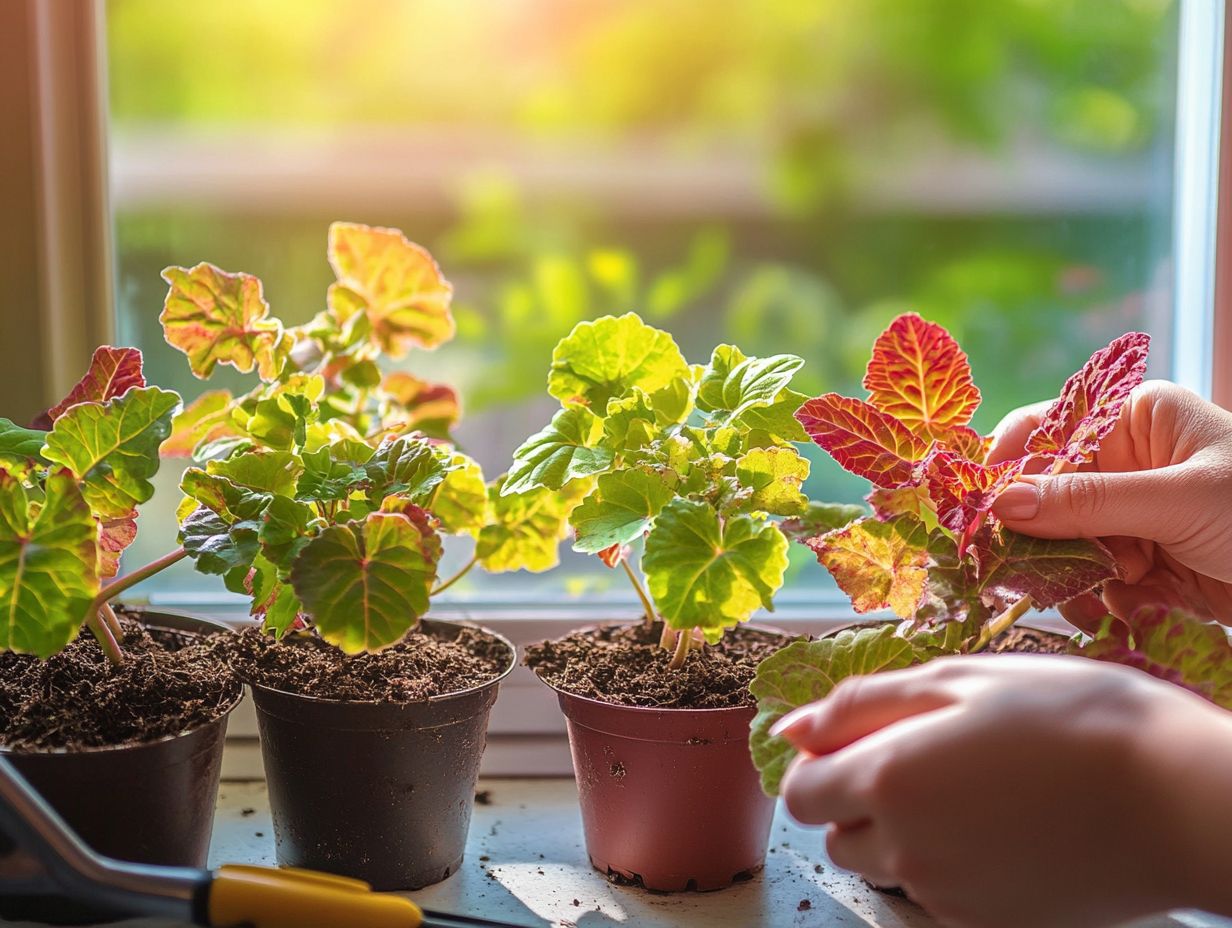
Getting ready for propagation is an exciting step that can lead to amazing plants, whether you opt to propagate coleus through cuttings or seedlings.
The right supplies and materials can profoundly influence the outcome. Selecting high-quality potting soil, suitable containers, and maintaining optimal humidity and temperature levels are all critical factors in ensuring successful propagation.
By having these essentials at your fingertips, such as potting soil and containers that promote proper drainage, you not only streamline the process but also significantly enhance the overall health and vitality of your new plants.
Supplies and Materials Needed
To successfully propagate coleus plants, having the right supplies and materials is key, whether you re working with cuttings or seeds. Essential items include well-draining potting soil, containers that promote proper drainage, and tools for trimming and care.
Humidity domes are covers that help keep moisture in, making them essential for creating a nurturing environment that encourages root development in cuttings. They are a critical component for successful propagation.
Consider adding rooting hormone to speed up growth from cuttings. A spray bottle will help you maintain the ideal moisture levels, while labels or tags can assist in keeping track of your various coleus varieties.
Don’t overlook the importance of adequate light; having a bright, indirect light source or a grow light will work wonders. A thermometer and hygrometer are also wise investments, allowing you to monitor the environment and ensure the optimal temperature and humidity for thriving how to propagate Sansevieria plants.
Step-by-Step Guide to Propagating Coleus Plants and Other Houseplants
A step-by-step guide to propagating coleus plants can elevate your gardening experience, whether you’re a novice or a seasoned expert.
This comprehensive guide will walk you through essential techniques for propagation via cuttings and seeds, offering meticulous instructions for each method. By adhering to these steps, you ll not only nurture new plants with confidence but also enrich your gardening pursuits with vibrant foliage and rewarding growth.
Start your coleus propagation today and watch your gardening skills flourish!
Instructions for Each Method
Clear instructions for each method of propagating coleus plants are crucial for achieving the results you desire, whether you choose cuttings or seeds. When working with cuttings, focus on selecting healthy stems, applying rooting hormone, and ensuring optimal soil and humidity conditions.
If you opt for seeds, be attentive to light requirements, soil preparation, and consistent watering to facilitate successful germination.
For cuttings, prepare a well-draining potting mix enriched with perlite or vermiculite materials that help keep the soil airy and prevent it from becoming too compact. Aim to maintain a warm environment, ideally around 70 F, as this encourages rooting.
Make it a habit to mist the cuttings regularly to keep humidity levels up. Provide them with bright, indirect light.
When propagating coleus from seeds, start by selecting a seed-starting mix that allows for ample drainage. Place the seeds about a quarter-inch deep and keep the soil moist but avoid over-saturation. A temperature range of 65 F to 75 F will optimize germination.
Once those seedlings pop up, ensure they receive adequate light to promote robust, healthy growth.
Troubleshooting Common Issues
Troubleshooting common issues in coleus plant propagation and understanding gardening techniques can greatly enhance your success as a gardener. This knowledge helps you sidestep the typical pitfalls of nurturing new plants.
Keep an eye on factors like humidity, temperature, and pest control, as these elements can negatively impact the health of your cuttings and seedlings.
By recognizing these challenges early on, you enable yourself to take timely action, ultimately elevating your overall plant care experience.
How to Address Problems with Propagation
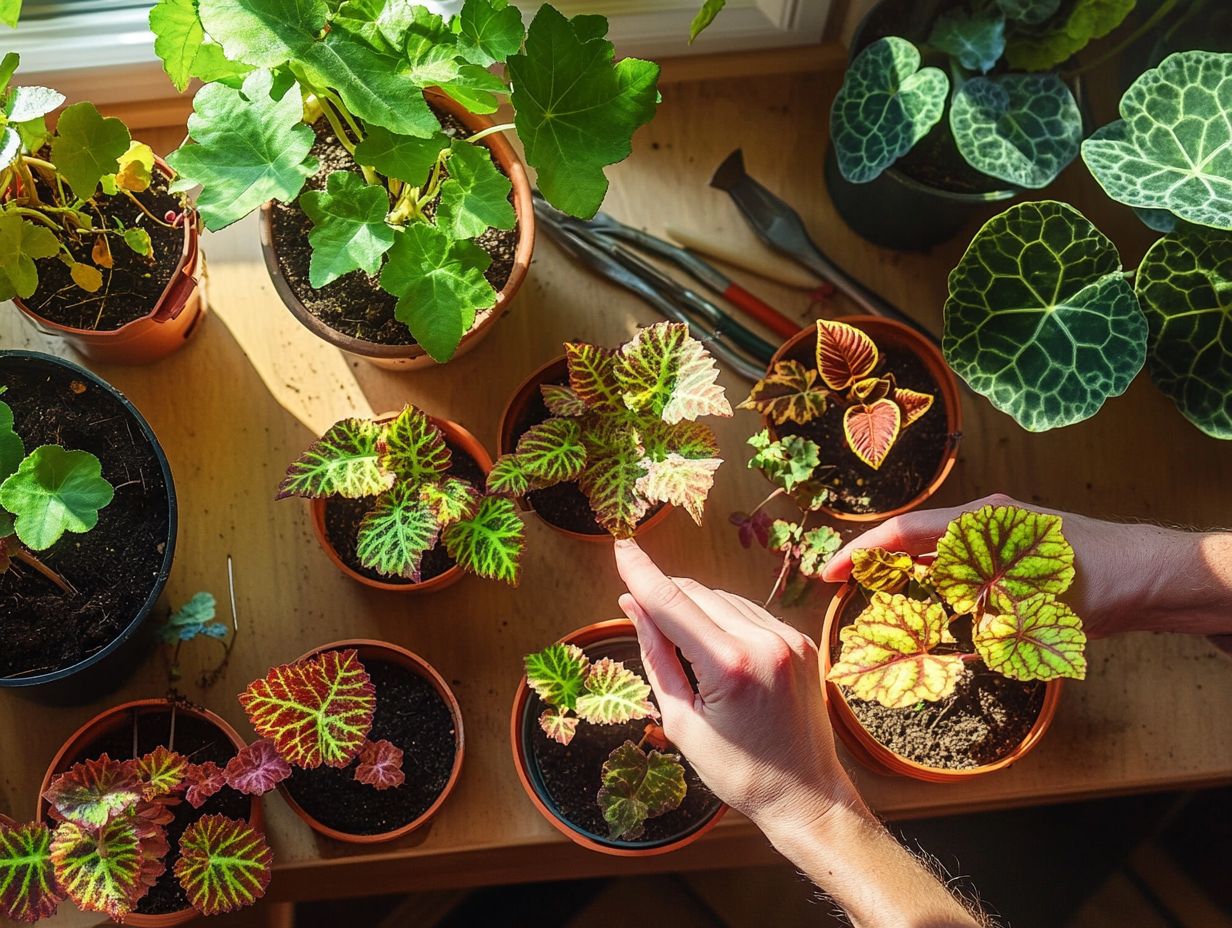
To address propagation issues, observe your plants closely and act quickly to ensure the health of your coleus plants. You might encounter common challenges such as pest infestations, inadequate humidity, or unsuitable temperatures, all of which can impede successful growth.
Recognizing these hurdles early and implementing appropriate care techniques can transform potential setbacks into fruitful outcomes.
Understanding the signs of trouble is essential, as subtle changes can signal deeper issues. For example, an uptick in leaf drop or discoloration may indicate pest intrusion, while wilting leaves could suggest that humidity levels are lacking.
To manage pests effectively, inspect your plants regularly and use organic solutions like insecticidal soap. To maintain optimal humidity, consider misting or setting up a humidity tray this creates a favorable environment for growth.
Temperature control is equally crucial. Ensure that your coleus plants are nestled in a warm spot, away from harsh drafts, to promote robust growth and significantly reduce the risk of disease.
Caring for Newly Propagated Coleus Plants
Caring for newly propagated coleus plants is essential for their successful growth and development, especially in the crucial early stages following either cutting or sowing seeds.
Provide the right light conditions, implement effective watering techniques, and maintain optimal humidity levels. Each of these elements plays a vital role in the health of your young plants.
By adopting effective care strategies, you can cultivate a thriving environment for your coleus varieties, ensuring they flourish beautifully. Learning how to successfully propagate begonias can further enhance your gardening skills.
Tips for Ensuring Successful Growth
To ensure the successful growth of your newly propagated coleus plants, using simple tips can significantly enhance their development and overall health. Start by providing them with adequate light preferably indirect bright light and adopt proper watering techniques to avoid over-saturation.
Creating a cozy home for your plants is crucial for fostering robust growth. Coleus plants thrive in bright, filtered sunlight, allowing their vibrant foliage to flourish without the risk of burning. To enhance your plant care routine, consider learning how to propagate your favorite houseplants. It’s also important to rotate the pots occasionally to ensure even light exposure on all sides.
When it comes to watering, check the top inch of soil; if it feels dry, it’s time to water, ensuring that excess moisture drains well. These plants thrive best in humidity levels around 50-60%, so consider placing a humidifier nearby or misting them regularly.
By keeping an eye on these elements, you can create an ideal environment for your coleus, resulting in thriving and colorful displays that will truly enhance your space. To expand your indoor garden further, consider learning how to propagate spider plants as well, and start propagating your coleus plants today for a vibrant indoor garden!
Frequently Asked Questions
Can I propagate coleus plants from cuttings?
Yes, coleus plants can be easily propagated from stem cuttings.
When is the best time to propagate coleus plants?
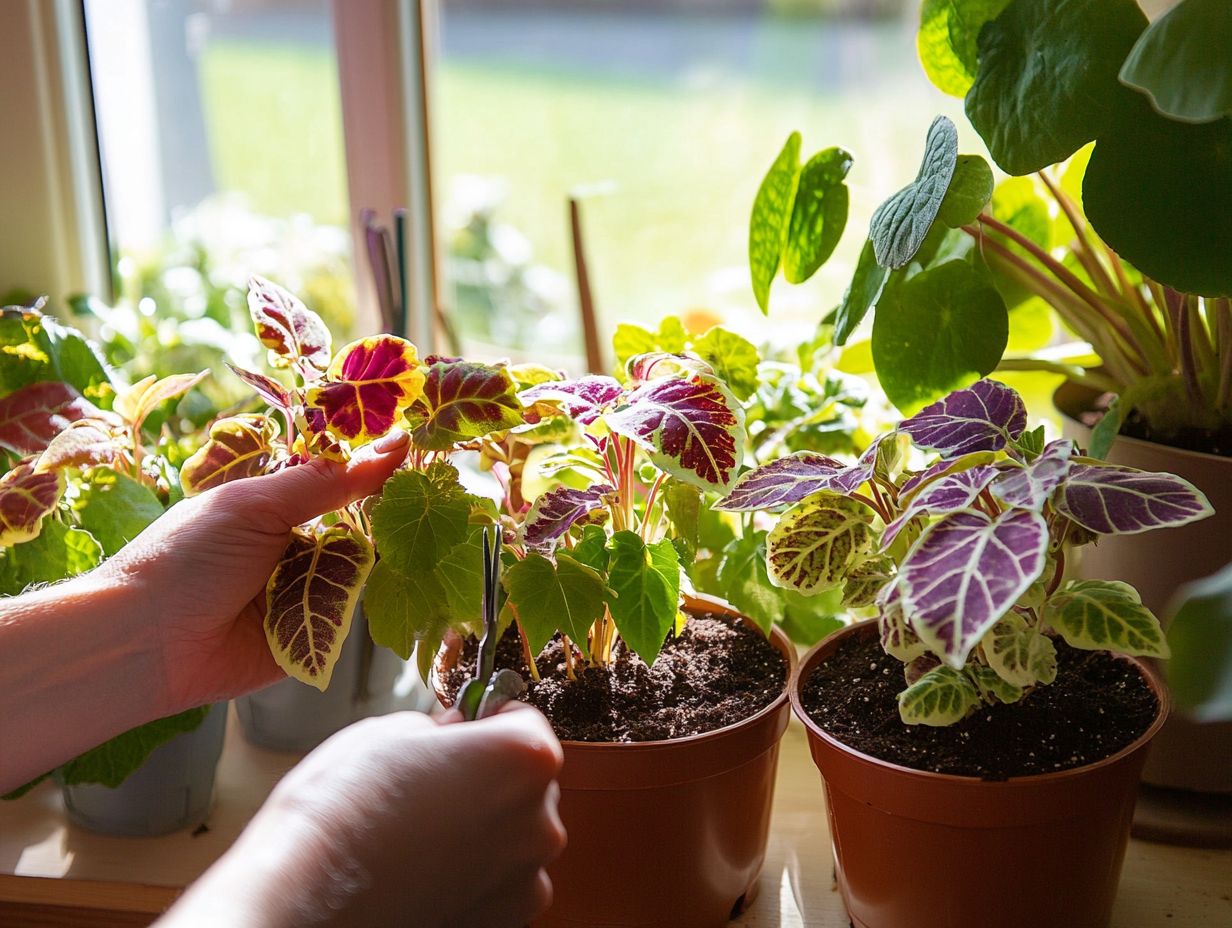
The best time to propagate coleus plants is during the spring or early summer when the plant is actively growing.
What is the best method for propagating coleus plants?
The most successful method for propagating coleus plants is through stem cuttings in water or soil.
How long does it take for coleus cuttings to root?
It usually takes about 2-3 weeks for coleus cuttings to develop roots. However, this may vary depending on the environmental conditions and care provided.
Do coleus plants need any special care during the propagation process?
Yes, it’s important to keep the cuttings in a warm and humid environment with indirect sunlight. Regularly change the water in the propagation container and mist the leaves to maintain moisture.
Can I use any type of water to propagate coleus plants?
It is recommended to use filtered or distilled water for propagating coleus plants, as tap water may contain chemicals that can harm the cuttings.

